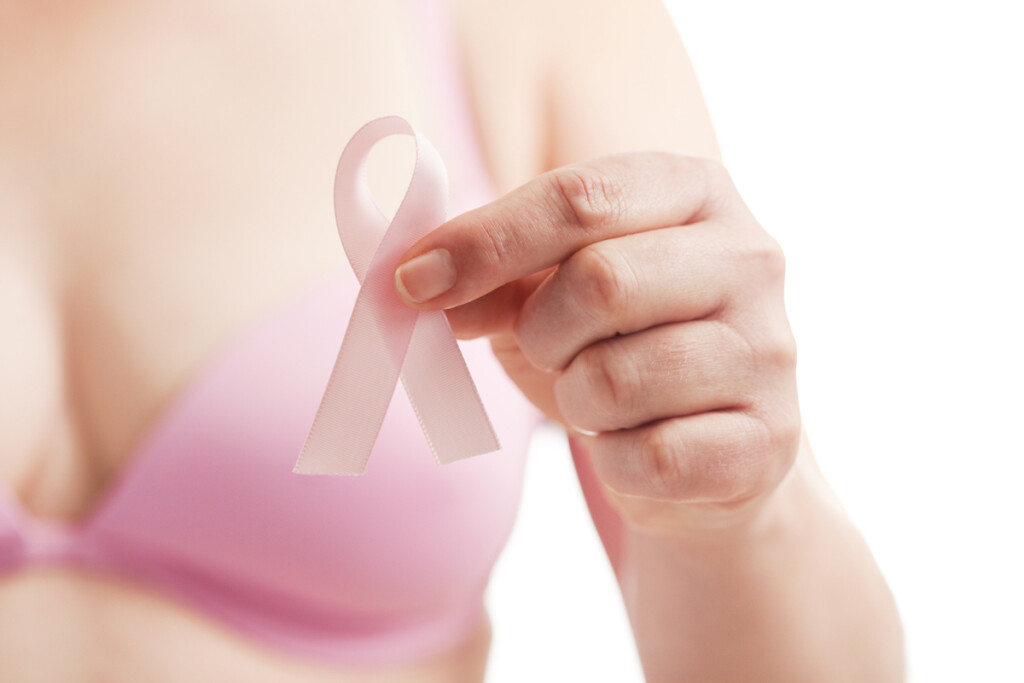Breast Cancer: What’s New
Just in time for pink-ribbon month, a talk with four oncologists offers an update on the second most malignancy in U.S. women.

Each October, some of us spring into action to mark Breast Cancer Awareness Month. We wear pink, walk with or donate to New Jersey’s Susan G. Komen Race for the Cure, and send a little extra love to women we know personally who are survivors. Certainly this pink cause is no shrinking violet—the struggle against breast cancer is one of the most publicized crusades there is. But the battle lines change every year, as screening processes and treatment protocols for the disease evolve and advance. So BERGEN sought out four board-certified physicians for a late 2023 update on breast cancer. Of course, one message they all agree on hasn’t changed: Early detection saves lives.
New studies are coming out constantly. What’s the most important thing to know about breast cancer in 2023?
Dr. McGreevy: There are lots of new therapies and surgical techniques, but even to this day, early detection is the best way for us to increase and improve survival rates. Stage 1 breast cancer has a 99 percent survival rate, and most women diagnosed at an early stage also require less treatment and have more options than those at a later stage.
Dr. Rivera: There’s also been significant progress in the research and development of drugs that can improve outcomes with less toxicity across many types of breast cancer. This year has seen an advancement in endocrine therapy, with the addition of a cyclin-dependent kinases (CDK 4/6) inhibitor, which improves outcomes in early-stage, estrogen-sensitive breast cancer.
Have screening guidelines changed?
Dr. Morrison: This year, news came out that the U.S. Preventive Services Task Force will be changing its guidelines. New recommendations call for women to begin receiving mammograms every two years starting at age 40 if they are at average risk for breast cancer. That’s a significant (and welcome) change from its previous guidance that women should begin mammograms at age 50.
Dr. Podolski: The American Cancer Society recommends that women ages 40–44 make an informed decision with their health care provider, that those 45–54 have annual breast imaging and that those 55 and older have imaging every 1–2 years for as long as they are in good health.
What’s one thing people may not know about breast cancer and its risks?
Dr. Morrison: Many people don’t realize that women at average risk for breast cancer still have a 10–12 percent chance of getting breast cancer in their lifetime. This illustrates the importance of regular mammograms and self-exams, even for women with no family history of breast cancer.
Dr. McGreevy: Still, what surprises most patients is how good the survival rates are and that we have options for treatment. There are not many cancers that we can say have a 99 percent chance of survival.
What are the typical treatment options once a patient receives a breast cancer diagnosis?
Dr. Podolski: Typically, treatment for early-stage breast cancer includes surgery, possibly radiation and chemotherapy and/or targeted therapy with anti-estrogen pills. Treatment options will vary based on the stage of the breast cancer (I–IV) and the type of breast cancer (whether it’s hormone-positive, HER2 positive, or something called triple-negative). Once a patient is diagnosed with breast cancer, she will be referred to either a breast surgeon or a medical oncologist to determine the appropriate individualized treatment plan.
Dr. Rivera: Appropriate treatment always depends on the patient and type of cancer.
How do age and lifestyle factors such as weight and diet play into breast cancer diagnoses?
Dr. McGreevy: Most breast cancers are estrogen-driven. Fat cells produce estrogen, so extra weight increases the risk of breast cancer. We recommend a healthy diet to reduce cancers and heart disease. More active patients are less likely to develop cancers too.
Dr. Morrison: But this doesn’t mean that everyone has to meet their goal weight. It’s more important to improve your diet with lower carbohydrates and fat, and exercise at least 20 minutes most days of the week.
Dr. Podolski: Alcohol has also been shown to increase the risk of breast cancer in postmenopausal women when one consumes three or more drinks a week.
How has breast cancer treatment improved in the past year or so?
Dr. Rivera: Treatment has improved with the recent development of medications with fewer side effects. Advancements in imaging and diagnostics have also improved the process of determining the exact type and amount of treatment needed by each patient.
Dr. Morrison: Immunotherapies have also improved treatment; these include antibodies, as well as drugs, that stimulate the body’s own immune system to help fight the cancer.
Dr. McGreevy: And the push for breast-cancer treatment has been de-escalation, meaning we’re doing fewer surgeries and fewer treatments to get the same outcomes. In some cases this could mean pills instead of surgery, or shorter durations of chemotherapy, for example.
What are your thoughts on genetic testing for breast cancer?
Dr. Morrison: Genetic testing is of paramount importance in the detection and treatment of breast cancer. Though what’s called “gene-positive” breast cancer is a small portion of cases diagnosed in the U.S., knowing a woman’s genetic risk can help her physicians monitor her properly and guide her to appropriate screening options and interventions.
Dr. Podolski: If you have a family history of cancer (in particular a first-degree relative, i.e., a parent or sibling, with breast or a gynecologic cancer), then it’s appropriate to get tested to ensure that there’s nothing in your genetic makeup that increases your risk of cancer. If a woman has a genetic mutation, there are often different screening guidelines in place to ensure that a cancer can be detected early. There are also preventive measures that can be taken (e.g., surgically removing both breasts or taking anti-estrogen pills) for women who have a known BRCA mutation. Such steps can decrease their risk of developing breast cancer.
How will AI play into breast cancer treatment and diagnosis?
Dr. Rivera: There’s already evidence that AI will have a big impact on cancer care, including a recent study showing AI software that’s more capable of detecting cancer than traditional mammograms. This type of innovation is only the beginning.
Dr. Podolski: AI may also help develop models to better assess who may develop progression of disease. It may eventually be used during treatment to help adjust doses and better tailor a patient’s treatment plan based on toxicities.
Recent research in the Annals of Internal Medicine suggests that women over 70 are often overdiagnosed with breast cancer.
Dr. Morrison: New studies have shown that these women can avoid certain treatments for breast cancer in certain situations. For instance, in early-stage breast cancer, examining the lymph nodes under the arm is no longer standard for the over-70 population, as the results may not change recommendations for therapies using medication or radiation therapy.
Dr. Podolski: If a woman has a range of other medical problems and is not in good physical health, then it’s unlikely that detecting a very early-stage breast cancer will affect her life expectancy, and she likely wouldn’t need a mammogram.
Dr. Rivera: We recommend that patients 70 or older have a conversation with their primary care providers about the individual benefits of annual mammograms.
What else should we know?
Dr. McGreevy: I just want to reinforce the importance of screening and early diagnosis, which leads to better treatment. Women should advocate for themselves and if they have a problem with a breast—pain, nipple discharge, a lump or anything new or concerning—seek care as soon as possible.
Dr. Morrison: Today more women are cured of breast cancer than ever before. One reason for this is the earlier detection of the disease. The earlier it’s detected, the easier it is to cure. Screening for breast cancer certainly saves lives—there’s no better way to say this. More interventions and more targeted therapies also allow patients to remain cancer-free much longer and, most often, patients are cured.

